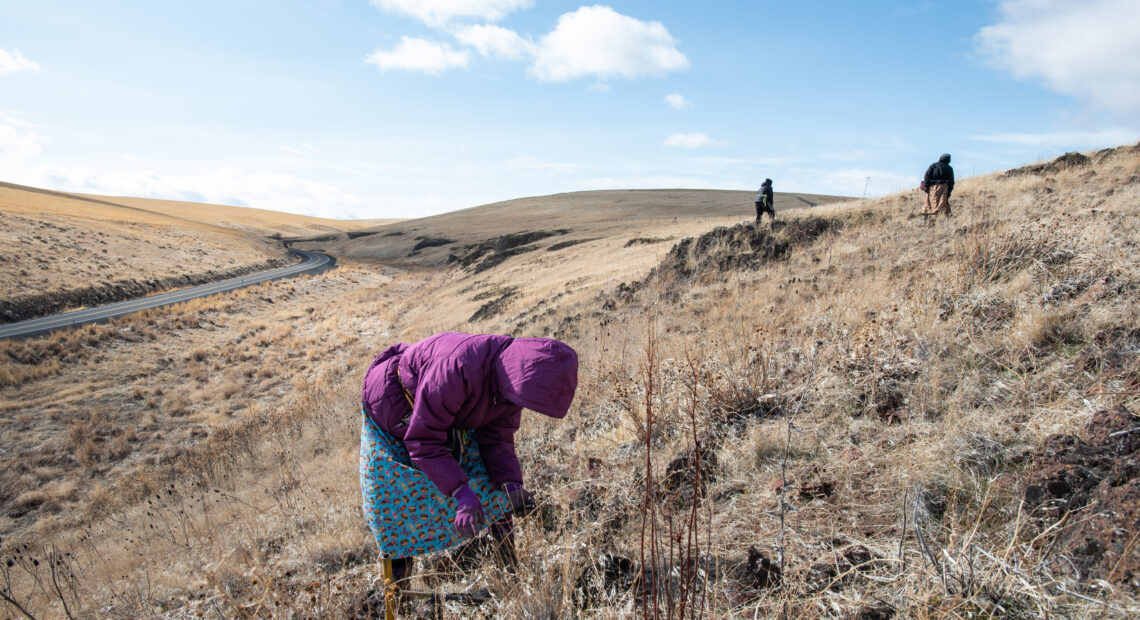
Moving up the line: Northwest tribal women and girls gather wild celery amid challenges
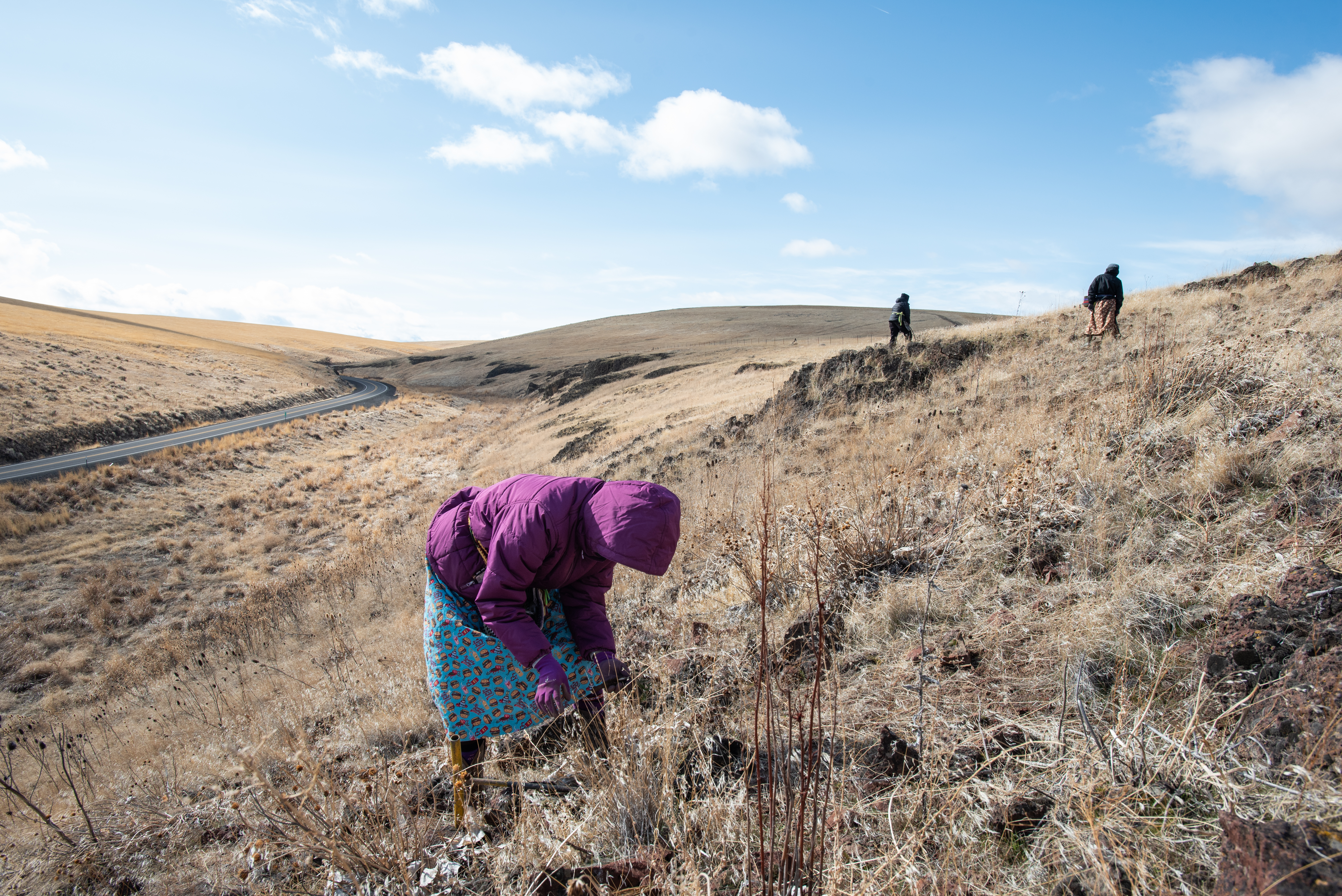
Listen
(Runtime 4:34)
Read
Off a remote highway in northeast Oregon, about 15 women and girls get ready to dig for wild celery.
They take a few last sips of hot coffee and tea, and grab their metal digging tools from their trucks.
“So if we’re all ready, we all need to line up,” says Trish McMichael, one of the leaders.
I first started reporting on the Umatilla Confederated Tribes around 20 years ago. As the group lines up from youngest to oldest on this cold, sunny morning, I notice some missing faces – mostly the elders who used to lead.
Like everywhere, COVID hit the reservation pretty hard. Now, it’s middle-aged women leading the way – like McMichael and Shawna Gavin, who both appear to shy away from the front of the line. That’s the place of the most experienced elder.
“I have a bell, do you want to have someone sing?” Gavin says.
“You’re at the front of the line, auntie,” McMichael replies. “Or someone’s at the front of the line, not me.”
They ring a bell rhythmically. It’s a moment of song and reflection for the plant they’re about to harvest.
Then, we scramble up steep rocks into the cliffs, sometimes with our hands clinging to the earth. Everyone swings their first celery root into the air.
“Woo, woo, woo! Turned it – did you get one?” Trinette Minthorn asks one of the younger girls.
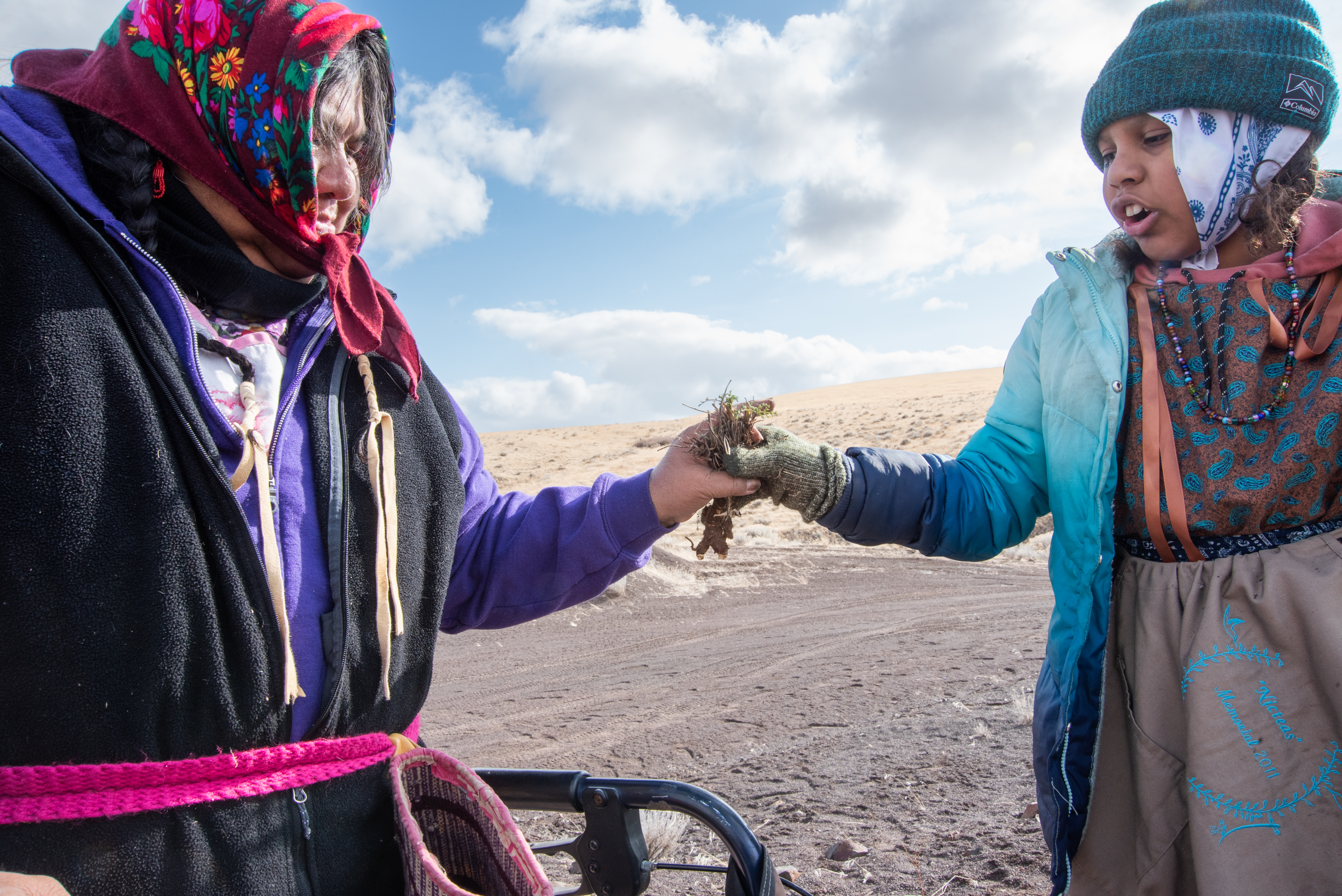
Lisa Faye Gavin-McIntosh, 9, hands a wild celery root bunch to her grandmother, Shawna Gavin, who will sort the new tender roots from the dry, old “grandparent” stalks. Shawna Gavin, 65, is the eldest of the group of gatherers and was accompanied by her daughters and granddaughters on the dig. “We have to repeat what we hear, and we have to repeat and remember what we see,” says Mission Longhouse Leader Armand Minthorn, when speaking about the tribe’s sacred traditions. (Credit: Annie P. Warren / NWPB)
Responsibility and change
Wild celery – or latit latit – is an early spring plant. It grows when there’s still snow on the ground. The tops, poking up through the rocks, look like small, curly parsley with white stalks.
The group digs them up with metal rods, called kapins, gently moving the angular basalt rocks back and forth to get at the plant.
“They’re everywhere as I look down,” I notice.
“They are, aren’t they!” Minthorn says. “We’re very blessed this year. Very blessed.”
Minthorn has been coming to collect these celery since she was six years old. Even though she’s just 48 now, she’s moved up the line – a responsibility she takes seriously.
“My dad’s mother, she dug for a very long time until she couldn’t get up the hills,” Minthorn says. “But she would come. She’d sit in the car, in the vehicle, and watch us. She was our cheerleader. She was our greatest supporter. […] When she left us it was hard — but we had to continue with the work, ‘cause that’s what she taught us.”
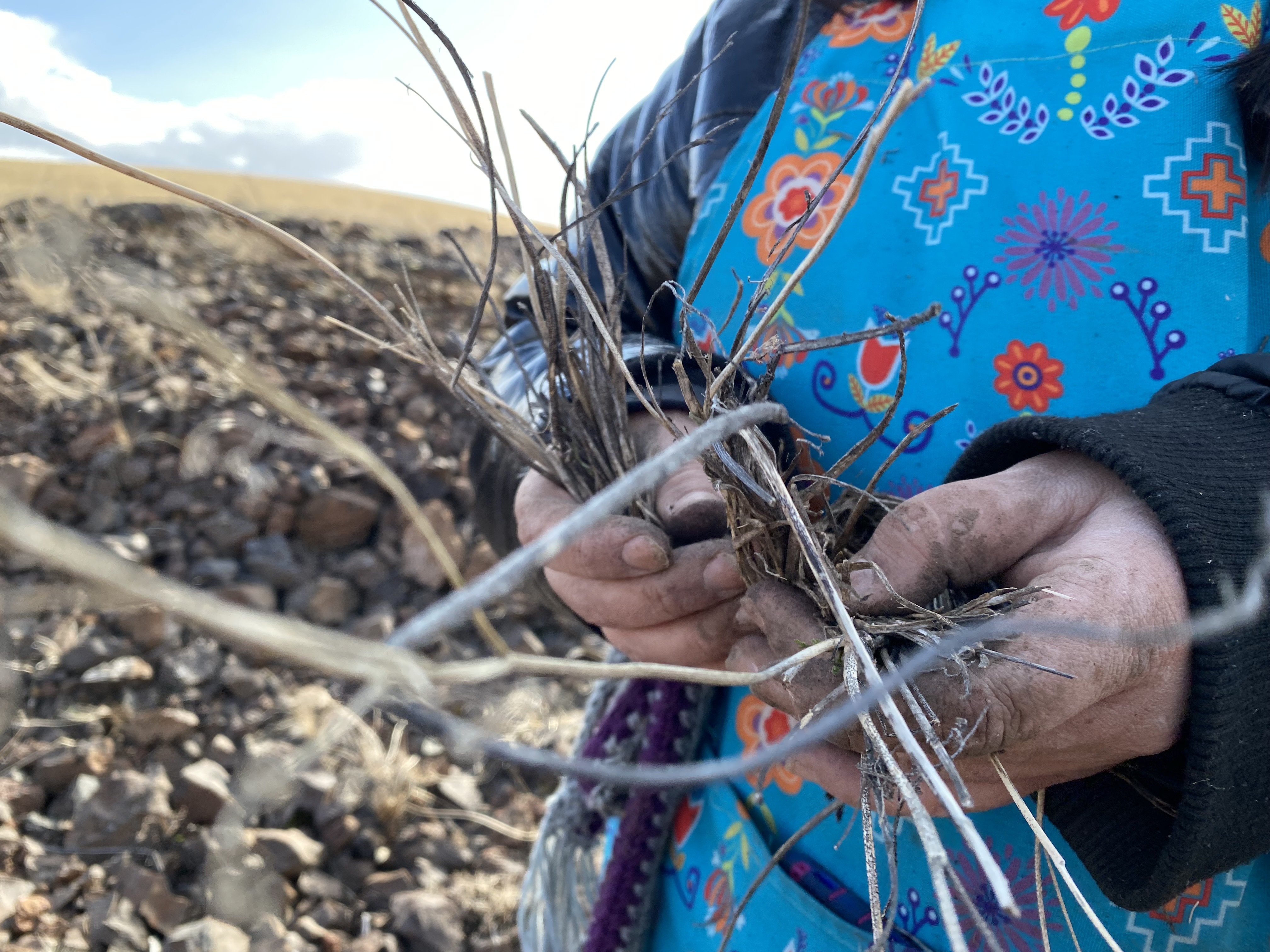
Jill-Marie Gavin works away the dead stalks of years past to harvest this spring’s new shoots of wild celery. Tradition states that when you taste the celery, a sacred “big sister,” your ancestors and even recent dead come back through the plant to nourish and help the people. (Credit: Anna King / NW News Network)
A family tradition
These women say each plant comes out of the ground with its grandparents, parents and children. The grandparents are the old, dead stalks from years past, and must be moved aside. The parents are tall and green, and the children are tiny nubs of even greener stalks.
Unlike other traditional foods, there isn’t a good way to preserve wild celery’s freshness. You eat it when it’s ready, and the group collects enough for everyone to have a taste. It’s a lot of work.
After the celery comes the native roots, then the huckleberries and chokecherries. That means dozens of trips out to the field – and traditions, dictated by the seasons, squeezed between 40-hour work weeks and limited time off.
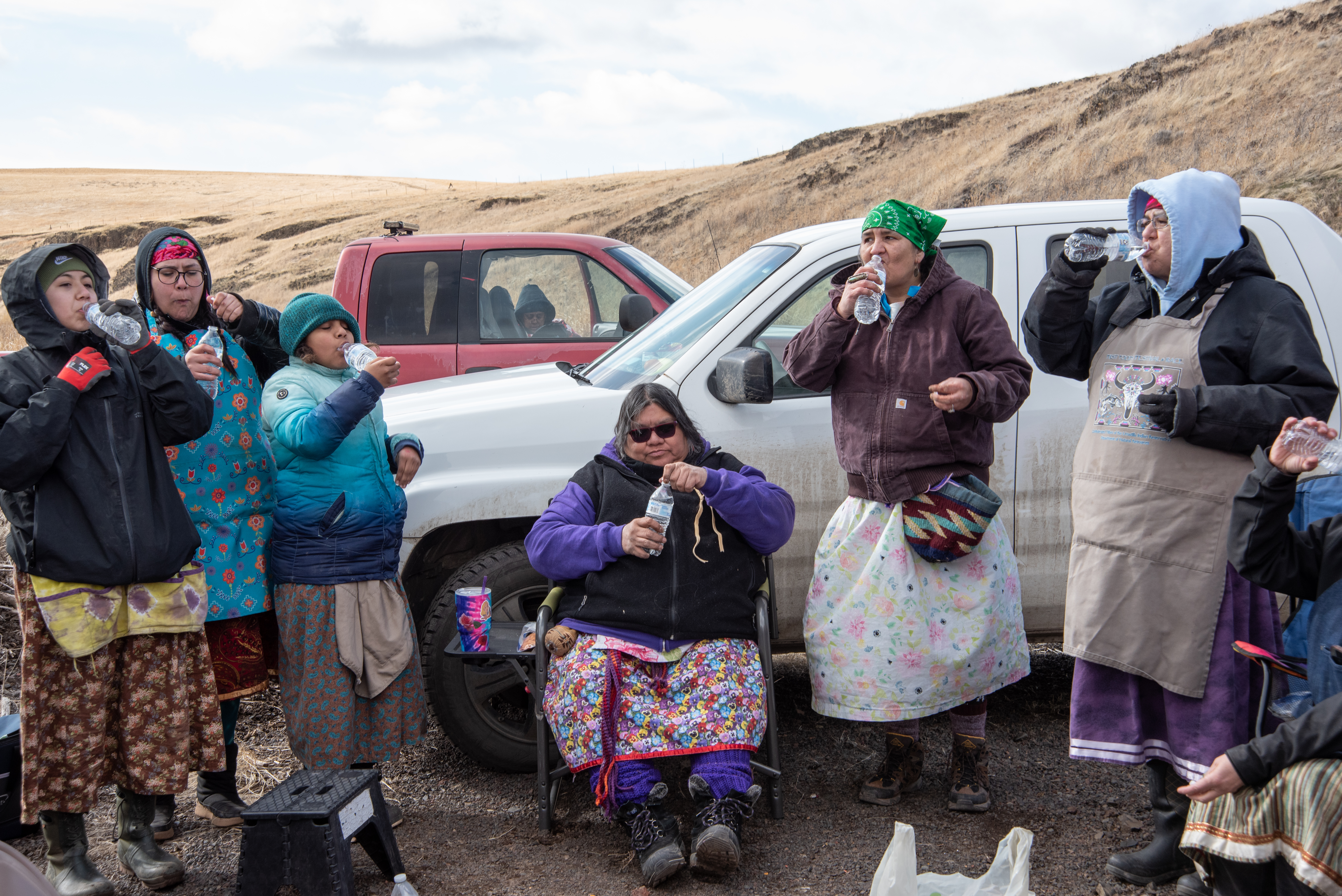
Tatum Ganuelas, Jill-Marie Gavin, Lisa Faye McIntosh-Gavin, Shawna Gavin, Jolie Wendt, and LeAnn Alexander, from left to right, finish their picnic lunch with a drink of water, or cuus. They started off the meal with a taste of the tribes’ traditional First Foods: salmon, meat, roots, chokecherry, and huckleberries. The meal began and ended with water in acknowledgement of the vital role it plays for all living things on earth. (Credit: Annie P. Warren / NWPB)
Another challenge: The celery is getting harder to predict, says Althea Wolf, who’s here digging with her daughter.
“We used to eat the celery ‘til about June,” Wolf says. “And it doesn’t last that long anymore ‘cause it’s so dry.”
“When you have bits of snowpack around, that’s really good for the celery because it helps it just to continue to grow and grow. Even the little bits of frost that gather around the plant base, that’s really good for it. And you don’t get that anymore really, because of changes in the environment,” she adds.
The hardest part might not be the cold, or the wind – but that you can’t taste the aromatic celery in the field. You have to wait; it can only be tasted after a ceremony back at the longhouse. They say when you taste it, your ancestors and recent dead are coming back through the plant to nourish and help the people.
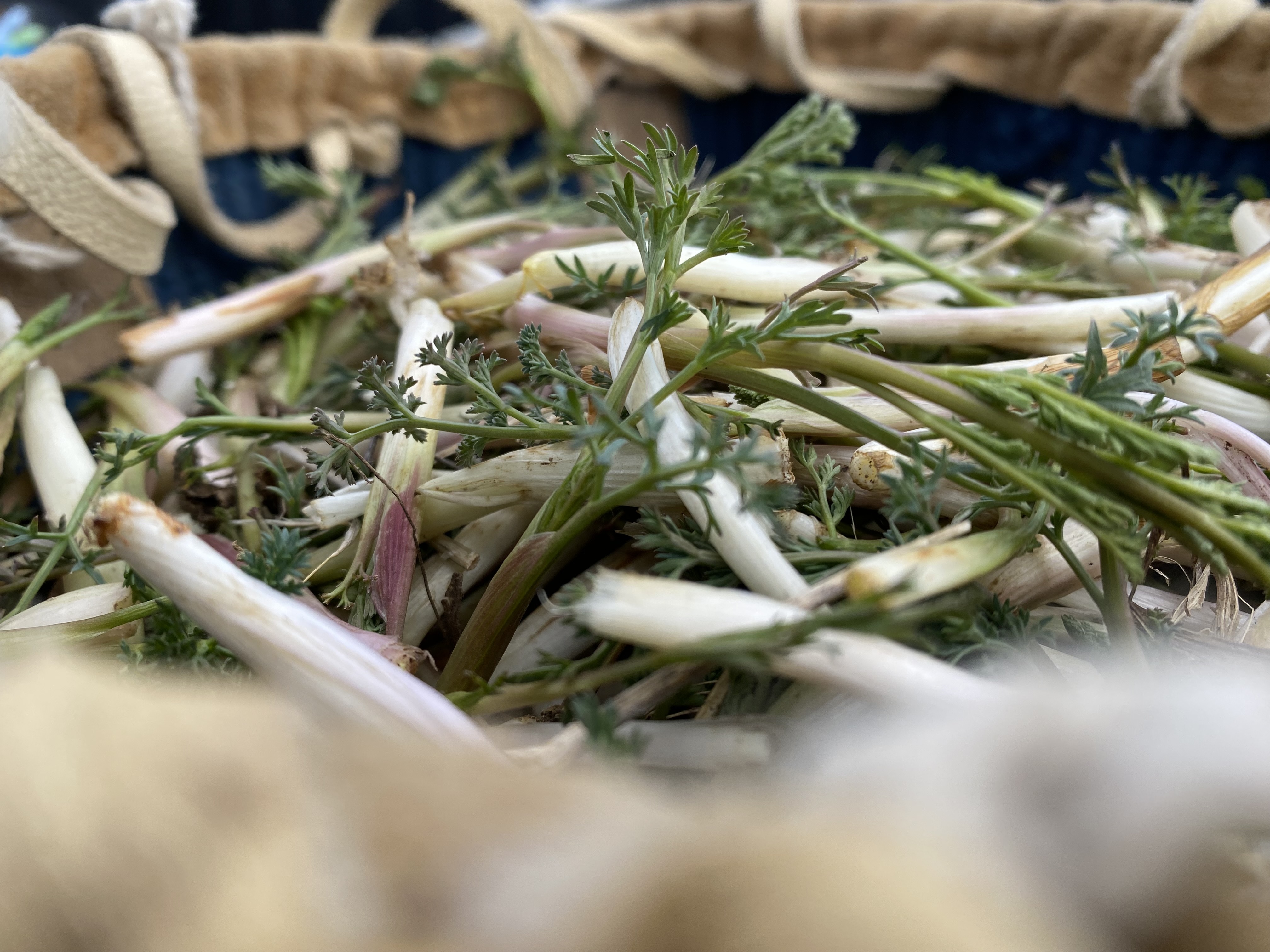
Freshly harvested wild celery fills a woven bag. Women and girls from the Confederated Tribes of the Umatilla Indian Reservation gathered the plants March 3 in the foothills of the Blue Mountains. They collected two full bags to take back to the Mission Longhouse, where they spent another day cleaning the celery and preparing food for a ceremonial feast on Sunday, March 5, attended by more than 100 tribal members and guests. (Credit: Anna King / NW News Network)
Latit latit
Out in the field, three-year-old Piipš is here for her first ceremonial dig.
“Say, ‘We’re happy to feed the people,’” encourages her mother, Michelle Tias.
“We’re happy to feed the people” Piipš cheers.
“Latit latit,” Tias says.
“Latit latit!” Piipš replies.
The little girl’s joy makes her elders smile. Soon, she’ll even be called to move up in the line.
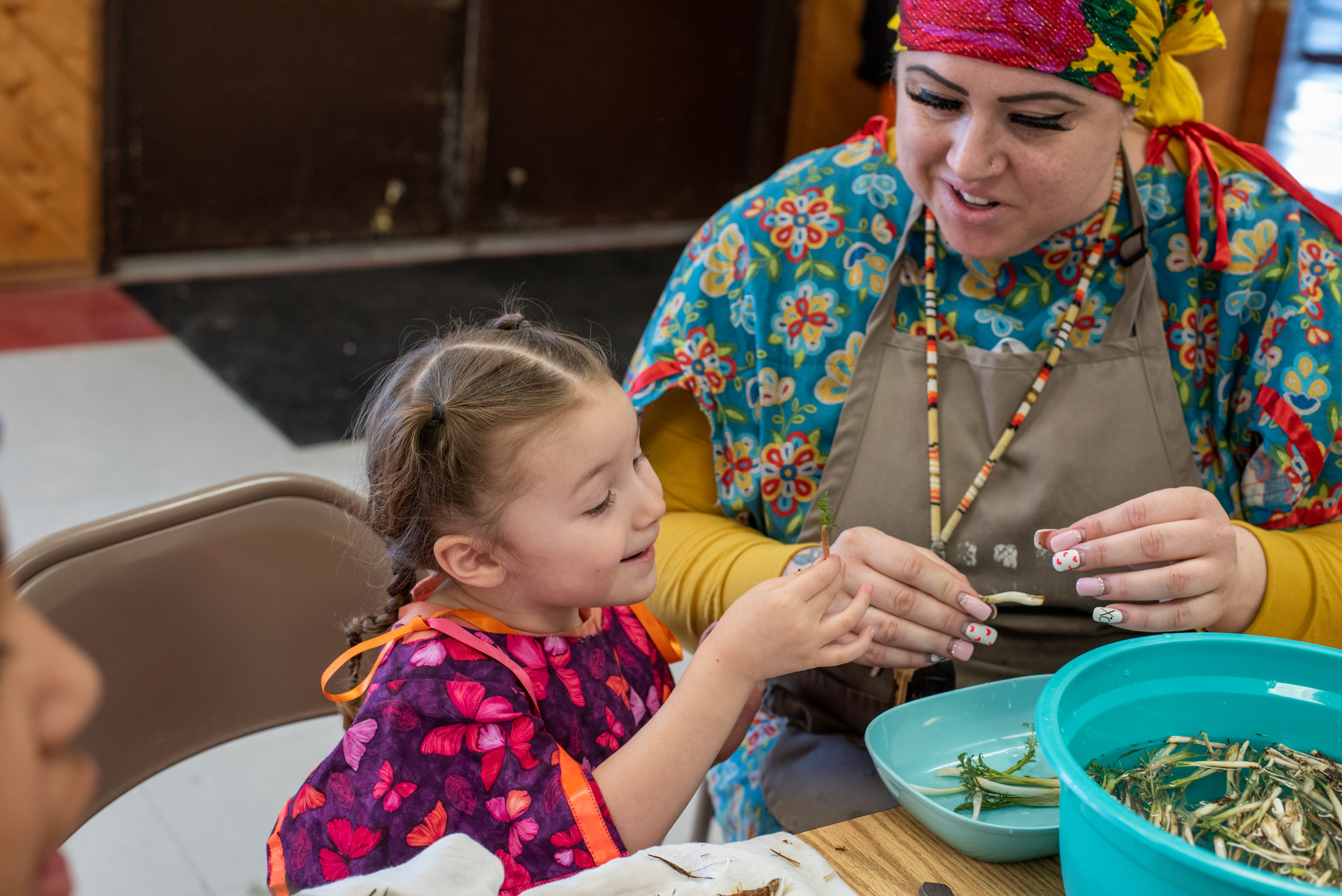
Sequoia Tias, known as Piipš, 3, sorts wild celery with her mother, Michelle Tias, in the Mission Longhouse on March 4. This marks the youngster’s first year digging for the annual celery feast. She keeps her plants separate from the rest and gives them to her grandmother, Shawna Gavin, 65, as a special honor during the ceremonial feast. (Credit: Annie P. Warren / NWPB)
As for the celery? It has a kick like peppermint. Then it’s earthy like a fennel bulb, then there’s a freshness. Shawna Gavin, Piipš’ grandmother, says it’s a treat.
“It just tastes so green, and springy and fresh,” she says. “There’s just nothing like it. I could really go on about celery; I love the celery so much.”
Horns are honking from back near the road. Everyone climbs down from the cliffs, carrying their woven bags full of celery.
Soon, the women will wash their hands with rose water. They’ll bring the roots into the longhouse for two days of preparation and celebration, and more than a hundred people will gather to celebrate their work and taste the harvest.
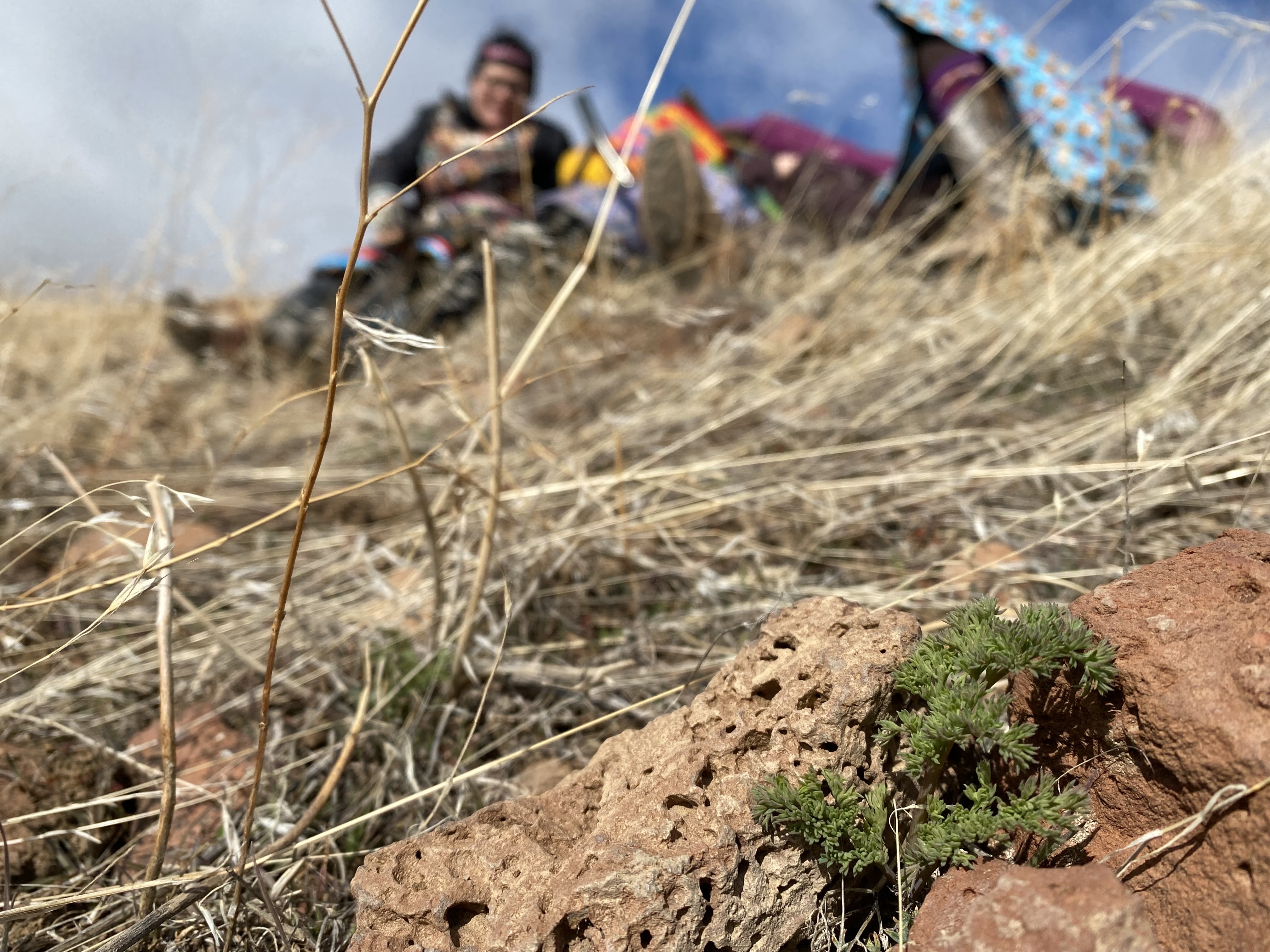
The women take a break from the wind-buffeted work of gathering traditional wild celery, at the lower right hand corner. (Credit: Anna King / NW News Network)















